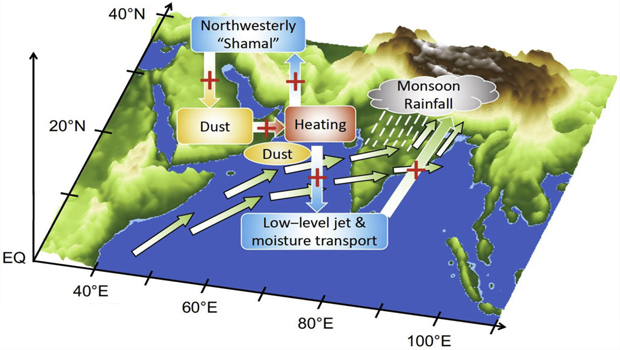
Climate Change Effect : A changed monsoon pattern is now the fate of all of us
Climate Change, The desperate cry and concern of climate change has been going on for the last two decades, but no concrete work has been done on climate change around the world, nor are correct statistics being given on climate change. Amidst all this, every year the world's top leaders hold climate change meetings in cities as big as them and make headlines in newspapers by throwing parties or posting photographs on social media. On the other hand, developing and poor nations continue to suffer the severe effects of climate change and millions of innocent people die due to climate change alone.
On the other hand, one of the most important causes of death due to climate change in Asia and India is the altered monsoon pattern in South Asia, a pattern that has claimed many lives in the past seven years and severely affected the economy worth billions of rupees. We have witnessed unprecedented events, on the one hand there is a terrible flood situation that the people of China have never seen. On the other hand, the Gulf is experiencing unprecedented rainfall.
After studying several reports, one conclusion is becoming clear that there has been a drastic change in the El Nino and La Nina patterns responsible for the untimely rains in India and South Asia. In the past the El Nino or La Nina rarely occurred, only once or twice in a decade. The effects are now being seen in different ways in different regions almost every year. Now the situation is that the areas which did not get rain or the areas which geographically do not need much rain get flooded every year. And in areas that need water, there is a drought-like situation.
A startling figure is also showing that the changed rainy season across India means more days of the year remain dry, while the days when it does rain lead to floods and devastation. Also, earlier there was only one flood in the entire season, now when it rains, it brings floods! This means that what was once a balanced monsoon and a monsoon lasting about four months now falls to only twenty days a year and during those days rivers run wild, villages are submerged and the infrastructure and systems of the so-called smart cities collapse.
Then there is an another research which states that the cause of the increasing rainfall in India is the directly linked to the increase in rising temperature in India. If the summer temperature rises on an average by one degree, we have to assume that the monsoon will increase directly by seven percent. And we have already seen this increase, the Himalayan regions of India have become the victims of the same, they have been experiencing extremely heavy rains, floods and landslides in the last seven years. The irony is that our northeaster states never experience pre-monsoon torrential rains, now states like Assam, Meghalaya and Sikkim start receiving intolerable rains in the month of June itself, and rivers like the Brahmaputra experience severe flooding.
The point is that the monsoon pattern has changed drastically due to climate change and the situation is very likely to remain so for the next decade or so. But what this changed pattern is doing to us economically is very worrying. To take a simple example, earlier we saw the first entry of Monsoon in Kerala from 1st June and departure of the Monsoon would start around 1st September, the rains would leave the country from 17th to 20th September. But now the pattern has changed and rains continue till October 26.
Of course, as mentioned earlier, there is no moderate rain till 26th October, but if it rains a lot for a few days, it rains in a pattern of extreme heat on most days. Now it happens that most of India's rainfed crops are sown usually in July and by mid-September the crop is ready within a few days after the rains or at the latest by the first week of late October. But now, the monsoon itself gets delayed by a month and also, during the monsoon, there are very few days of very heavy rains, due to which the crops are severely damaged and the farmers do not get enough money. We already know that more than twenty percent of our country's GDP depends on agriculture.
So, the increasing incidents of floods, cloudbursts or landslides cause huge damage to the infrastructure and public property of the country, approximately more than five hundred crores of rupees is the visible loss in relief or rescue works. We have already become victims of short erratic and extremely strong Monsoon systems. One figure also states that in the past five years, five of the world's major natural calamities and disasters have occurred in Asia, and that Asia's altered monsoon system is at the root of all the disasters.
It means that for the last five years we have lost hundreds of lives and billions of rupees in monsoon alone. We don't know where the situation will stand in the coming years and we also don't know what will be the solution as currently there is no vision or roadmap to fix these natural calamities or erratic monsoons.